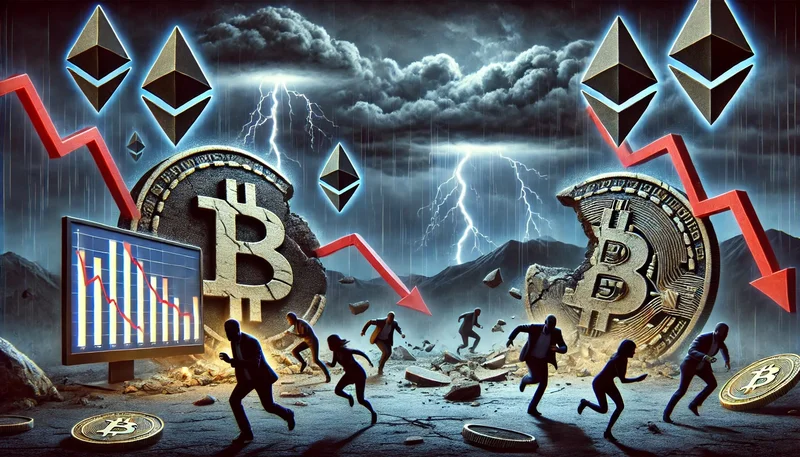 summary:
Title: Fear & Greed Index: A Trader's Best Friend, Or Just a Shiny Thermometer?The Crypto...
summary:
Title: Fear & Greed Index: A Trader's Best Friend, Or Just a Shiny Thermometer?The Crypto... Title: Fear & Greed Index: A Trader's Best Friend, Or Just a Shiny Thermometer?
The Crypto Fear & Greed Index is flashing red, deep in "Extreme Fear" territory. We're talking single digits – levels not seen since… well, since last April, according to some sources. The question, of course, is whether this is a genuine signal, or just another lagging indicator confirming what everyone already knows: the market is spooked.
Decoding the Fear
Let's break down what this index actually is. It's a composite, a Frankenstein's monster of market data points: volatility, volume, social media chatter, surveys, Bitcoin dominance, and even Google search trends. Each component supposedly reflects a slice of the market's emotional state. High readings suggest irrational exuberance; low readings, like the current one around 11, scream panic. The CNN Money Fear and Greed index is hovering around the same level.
But here's the rub: these indices, both the crypto-specific and the broader market ones, are reactive. They don’t predict; they reflect. The article itself admits the index "typically reacts after price movements occur." That's like using a thermometer to predict the weather. It tells you the temperature now, but not what it will be tomorrow.
The claim is that historical data shows the index hitting "Extreme Greed" before major peaks and "Extreme Fear" before major bottoms. Okay, show me the correlation coefficient. How statistically significant is this relationship? Because eyeballing a chart and saying "it usually happens" isn't exactly rigorous analysis. The TradingView charts provided in one article show that "Extreme Greed does not always mark a peak, and Extreme Fear is not always a bottom".
And this is the part of the report that I find genuinely puzzling. If the index isn't a reliable predictor, what's its actual value? Is it just a self-fulfilling prophecy? Does everyone pile in to buy when it hits "Fear," driving the price up, and sell when it hits "Greed," driving it down? If so, the index isn't reflecting market sentiment; it's creating it.
The Bitcoin Reality Check
Looking specifically at Bitcoin, the analysis suggests we're in a "mid-term corrective phase." The weekly chart shows a broken uptrend and a key support area breached. The next support level is around $78,000 (it was actually $77,340 at the time of writing). The advice? Wait for an "accumulation zone" or "clear buying activity" before jumping in.
Solid advice, generally. But it's also incredibly generic. Every trader waits for signs of a reversal before buying. The Fear & Greed Index isn't providing any unique insight here. It's just dressing up common sense in a fancy algorithm.
Bank of America's monthly survey is also flashing warnings. Average cash holdings among global fund managers have fallen to 3.7%—triggering their "sell signal." This has supposedly only happened 20 times since 2002. But what kind of sell signal are we talking about? A complete market collapse? A minor correction? Without quantifying the expected downside, this data point is just fear-mongering.
The Magnificent Seven stocks (Microsoft, Amazon, Nvidia etc) are also taking a beating. Apparently, all but one were down, with Microsoft and Amazon slipping over 3%. The S&P 500 closed below its 50-day moving average for the first time since April 30th. Is this a cause for concern? Maybe. But is it directly linked to the Fear & Greed Index? The connection seems tenuous at best.
One article suggests dollar-cost averaging and diversification as tactical approaches during periods of fear. Again, this is standard investment advice, not some revolutionary strategy unlocked by the index. Entering the Abyss: Interpreting the Crypto Fear and Greed Index for Investment Insight
Just a Confirmation Bias Machine
The Fear & Greed Index isn't a crystal ball. It's a rearview mirror. It tells you where the market has been, not where it's going. And while understanding market sentiment is important, relying solely on this index is like navigating a ship using only its wake. It might confirm you've been moving, but it won't help you avoid the iceberg ahead.

